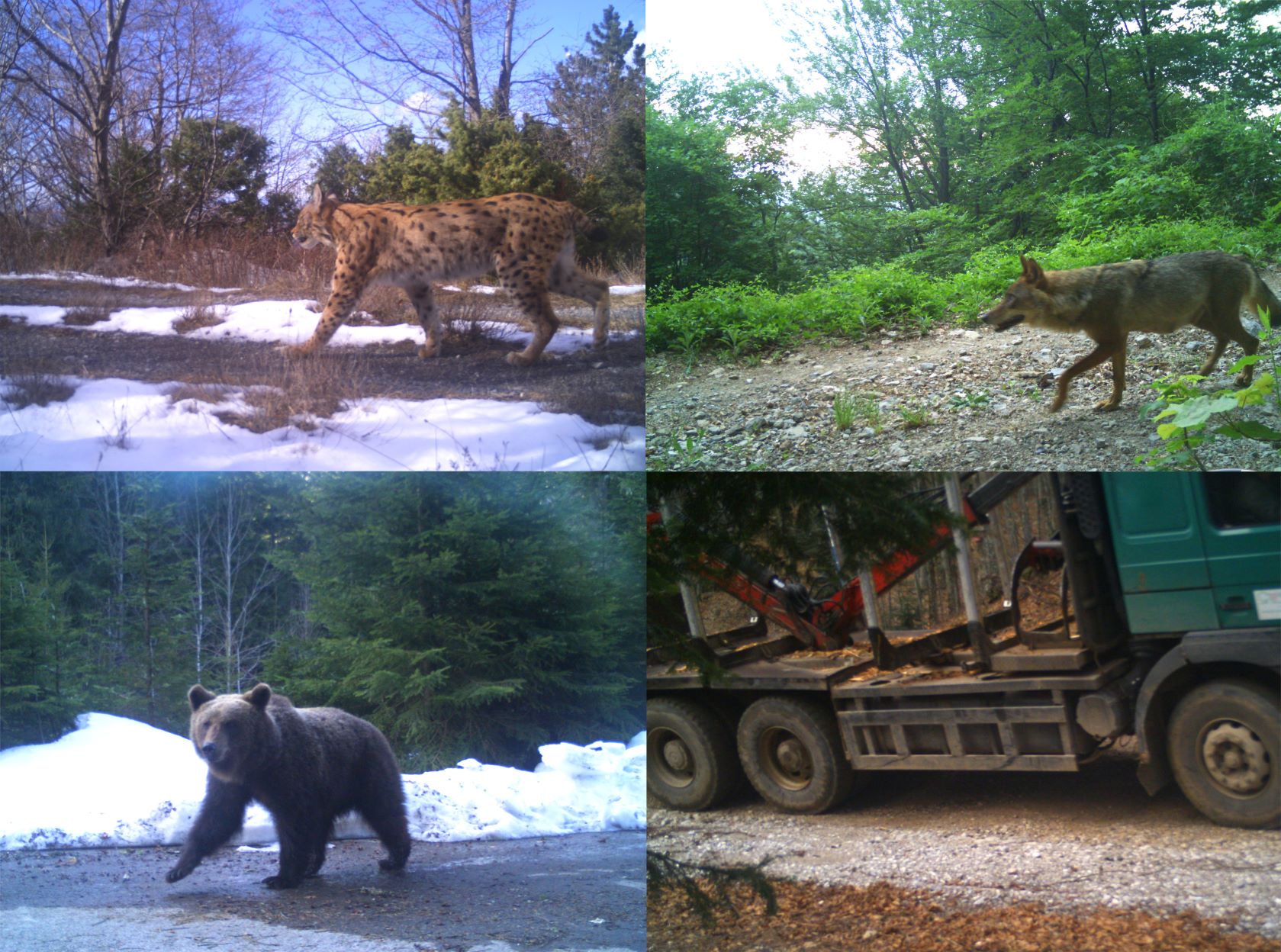Data from camera traps set within LIFE Lynx project are primarily used for continual monitoring of the success of lynx repopulation. However, camera-trap data also offers the opportunity to address unresolved questions regarding species ecology and community interactions.
With that aim, the new study on the impacts of human activity on Eurasian lynx (Lynx lynx), grey wolf (Canis lupus) and brown bear (Ursus arctos) was conducted by LIFE Lynx research team from Faculty of Veterinary Medicine in Zagreb. The study was published in the zoological scientific journal ‘Journal of Vertebrate Biology’.
Results obtained through camera trap data demonstrated that the general overlap in temporal activity of all three large carnivores and humans was low, the former being primarily active at night/dawn/dusk hours and the latter during daylight hours. In contrast, temporal activity of all three predators was similar on wildlife trails, where lower human activity was observed, and on forest roads where human activity was more frequent and diverse.
The daily activity patterns of animals are regulated by external factors such as habitat selection, temporal niche selection, prey availability and predation risk. Furthermore, different species show a variety of responses to human disturbance; therefore, to understand the effects of human activities on wildlife, it is crucial to consider different characteristics of human disturbance (e.g. type, frequency, timing and location of human activity) as well as characteristics of the observed species (e.g. species life history, age, and sex).
Studies like this can help understand the tipping points at which human activity becomes detrimental to biodiversity, ecosystem function and conservation efforts.

